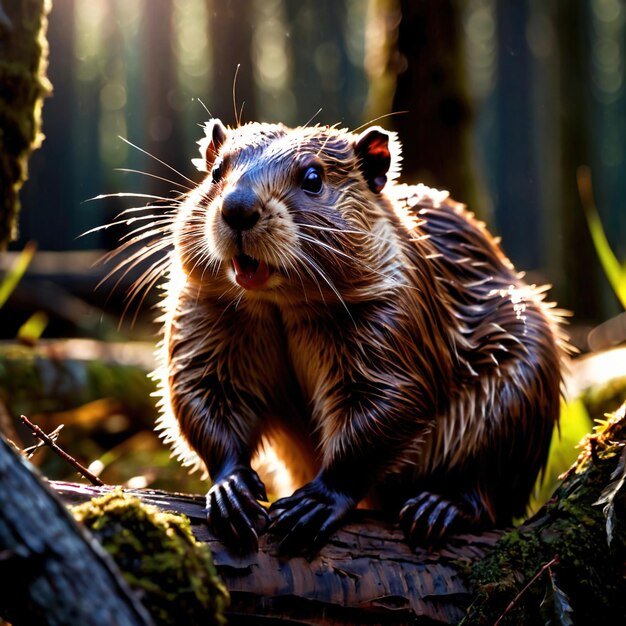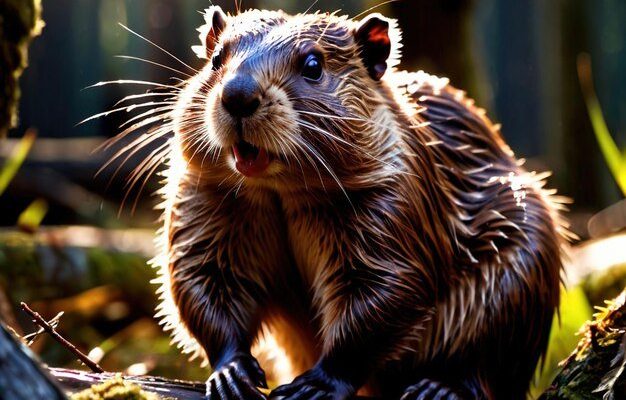
Beavers are often called “ecosystem engineers” because their activities create and modify habitats for various wildlife. Through their dam-building and tree-felling habits, they bring a cascade of benefits not just for themselves but for countless other species. Think of a beaver as a construction worker, tirelessly shaping the landscape, and the effects are far-reaching. As we explore their role, we’ll uncover how they promote biodiversity, improve water quality, and even help prevent floods. Ready to learn more? Let’s take a closer look at the fascinating world of beavers and their ecological importance.
Beavers as Ecosystem Engineers
When you think of beavers, one of the first things that probably comes to mind is their impressive dams. These structures are not simply for show; they transform the environment around them. By building dams across rivers and streams, beavers create ponds that serve as habitats for various species.
These ponds also help control water flow, slowing it down and allowing water to spread out, which can prevent erosion. It’s similar to how a sponge works—soaking up water and releasing it slowly. This slows down the water and provides a stable habitat for fish, amphibians, birds, and many other wildlife species, which in turn supports a diverse ecosystem.
Here’s the thing: when beavers build their dams, they are effectively creating wetlands. Wetlands are some of the most productive ecosystems on the planet, acting like nature’s filtration system. They purify water and provide essential nutrients to the surrounding areas, which benefits not only wildlife but also nearby plants and trees.
Promoting Biodiversity
Let me explain why biodiversity matters. Biodiversity refers to the variety of life in a particular habitat or ecosystem. The more diverse an ecosystem is, the more resilient it becomes to changes like climate shifts or disease outbreaks. Beavers play a significant role in promoting biodiversity in their habitats.
By creating wetlands, beavers provide essential resources for many species. Fish such as trout and minnows thrive in the calm waters created by beaver dams. These ponds provide safe breeding grounds and abundant food sources. Additionally, the increased water levels support a rich variety of plant life, which in turn attracts insects and other animals.
You might be wondering what happens when beavers are removed from an ecosystem. Studies have shown that without beavers, biodiversity can decline significantly. Fewer species of fish, birds, and insects can lead to an imbalanced ecosystem. So, the next time you see a beaver, remember that it’s not just building a dam; it’s also nurturing an entire community of living things!
Improving Water Quality
You may not realize it, but beavers are nature’s water filters. By building dams, they create ponds that trap sediment and pollutants. When water slows down in a pond, particles settle to the bottom instead of washing downstream. This natural filtration leads to cleaner water in rivers and streams.
As these ponds fill with water, they also provide a habitat for aquatic plants that absorb excess nutrients, such as nitrogen and phosphorus. These nutrients often come from agricultural runoff, which can cause problems like algal blooms and dead zones in water bodies. Beavers, through their dam-building activities, help mitigate these issues.
In urban areas, where water quality can be a major concern, beavers can be instrumental in restoring ecosystems. Their presence can lead to improved water quality for drinking and recreation, benefiting local communities too. It’s fascinating to think that a creature as small as a beaver can have such a big impact on our environment.
Flood Control and Water Management
Flooding can cause significant damage to homes and infrastructure. Beavers play a crucial role in naturally mitigating floods through their dam-building activities. When they create ponds, they help to absorb and slow the flow of water during heavy rain or snowmelt.
You can think of this like a safety valve. Just as a valve releases pressure in a system, beaver dams help to manage excess water, reducing the risk of downstream flooding. This is particularly beneficial in areas prone to heavy rains or flash floods.
Additionally, beaver ponds can help to recharge groundwater supplies. When water is held in these ponds, it seeps into the ground, replenishing aquifers. This can be especially important in regions facing drought conditions, where every drop counts.
Creating Habitats for Other Wildlife
Beavers are not only impactful on their ecosystems; they also create habitats for many other animals. The wetlands formed by beaver dams provide essential nesting and foraging areas for ducks, amphibians, and several fish species. In fact, these areas often become hot spots for wildlife activity.
Consider this: a beaver pond is like a bustling neighborhood. There’s always something happening—birds building nests in the trees, frogs croaking near the water’s edge, and fish darting about. Each species depends on the habitat created by the beaver, and their presence enriches the ecosystem.
Moreover, when beavers eventually abandon their dams, the area undergoes a natural succession process. It might become a wetland, a meadow, or even a forest, supporting different species over time. This continuous cycle of habitat creation and abandonment contributes to the overall diversity of life in the area.
The Balance of Nature
In nature, balance is everything. Beavers are a prime example of how one species can significantly influence its surroundings. Their activities might seem small, but they can create a ripple effect throughout their habitat.
However, this balance can sometimes be disrupted. In certain areas, beavers may be seen as pests if their dams cause flooding to human properties. It’s a tricky situation that requires thoughtful management. Instead of removing beavers, approaches like installing flow devices can help manage water levels while allowing beavers to continue their crucial work.
Ultimately, understanding the beaver’s role in its ecosystem emphasizes the importance of coexistence. By finding solutions that work for both humans and wildlife, we can support these incredible creatures while protecting our own interests.
In conclusion, the beaver is more than just a cute, furry animal; it’s a vital component of its ecosystem. From promoting biodiversity to improving water quality and preventing floods, beavers are nature’s engineers, shaping habitats and benefiting countless species. Their role is a reminder of how interconnected life is on our planet, and how essential it is to protect these remarkable creatures and the environments they create. So, the next time you encounter a beaver, remember the incredible impact it’s making on the ecosystem around it!

